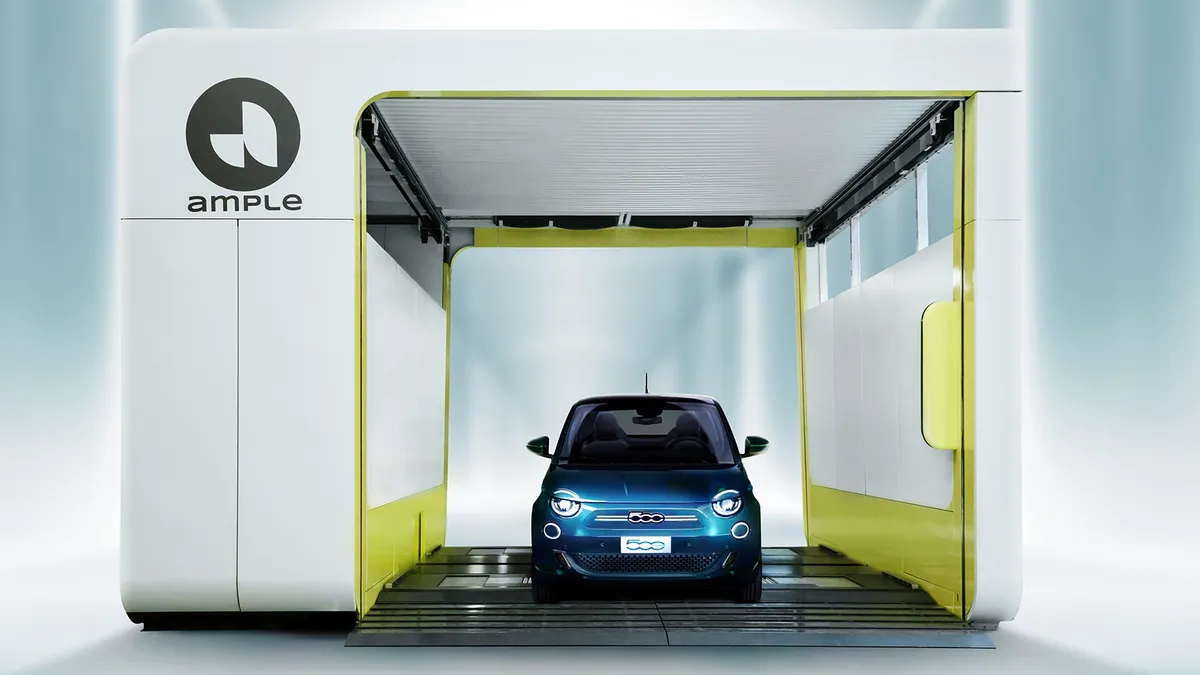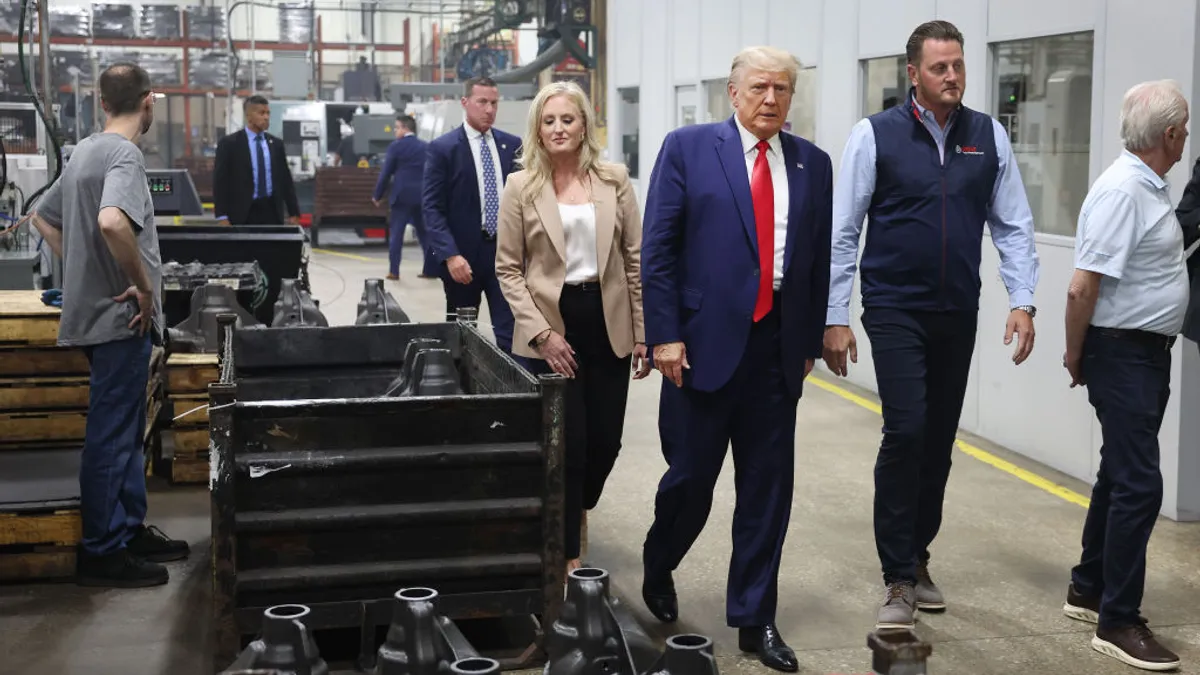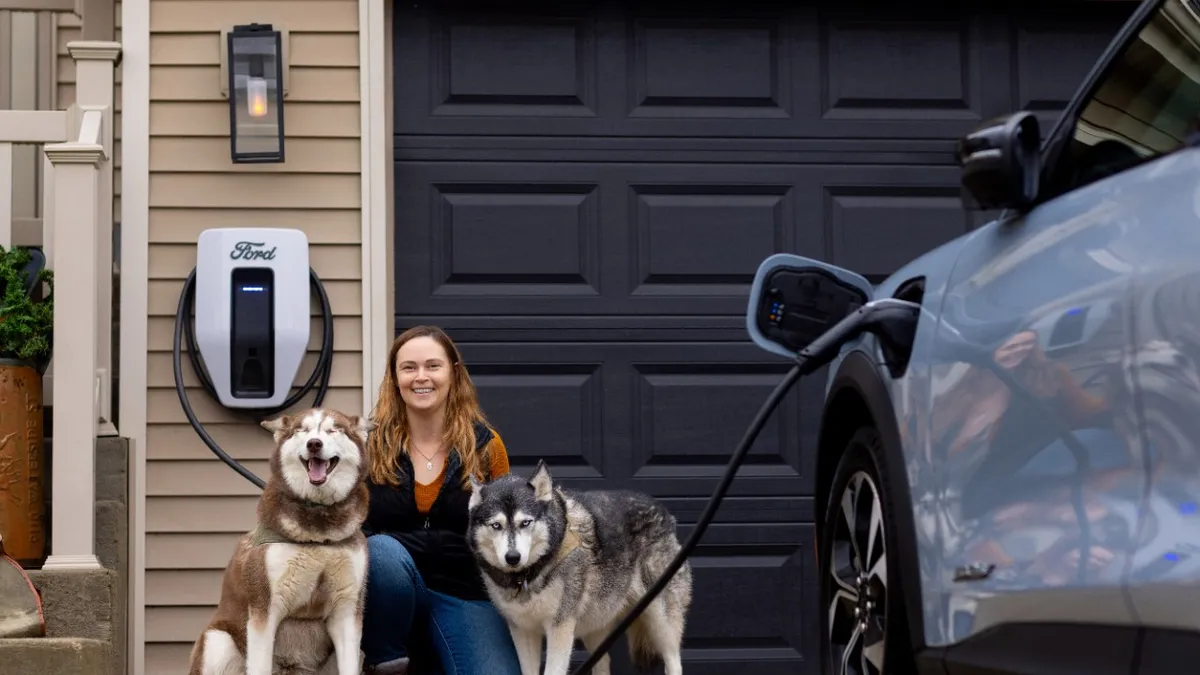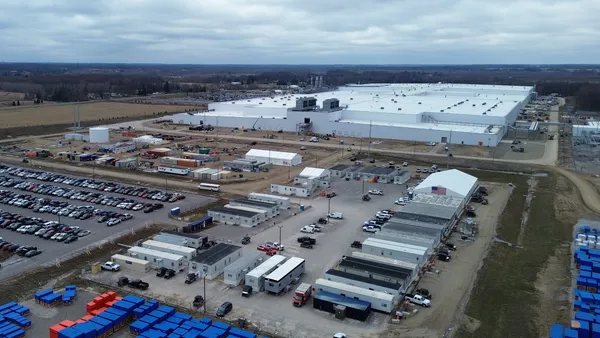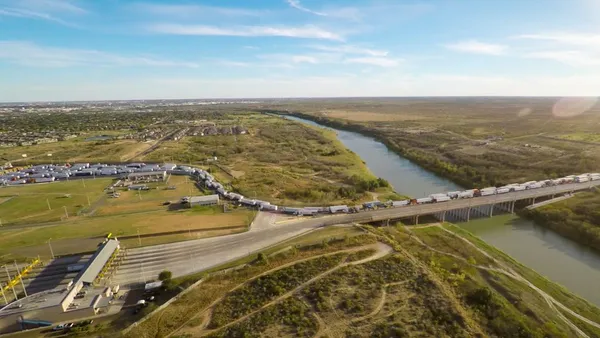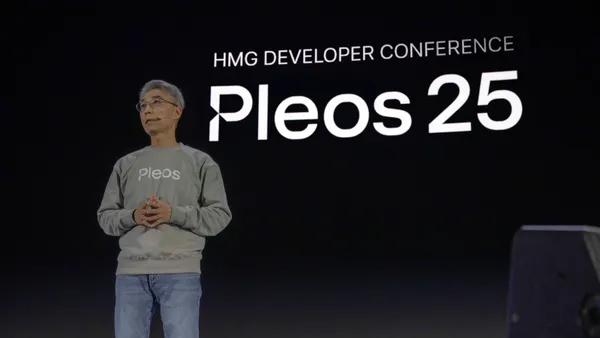Dive Brief:
- Stellantis will work with San Francisco-based Ample to test battery swapping technology for its electric vehicles, the company said in a press release.
- The automaker will launch the pilot program in Madrid in 2024 using a fleet of 100 Fiat 500e EVs from Stellantis’ Free2move car-sharing subsidiary.
- Battery swapping is an alternative to power EVs, compared to the longer process of plugging in to charge. Ample’s automated process takes around five minutes to remove and replace an EV’s discharged battery with a fully charged one.
Dive Insight:
Ample, which launched publicly in 2021 after seven years of operating in stealth, designed a fully autonomous EV battery swapping station that’s suitable for quick scaling and deployment. Battery swapping technology can also help address automotive buyers' worries about purchasing EVs, which include extended charging times, range anxiety and wear and tear on the battery.
Unlike the installation of conventional public EV charging infrastructure, Ample’s battery swapping station doesn't require a lot of construction because it fits in a space as small as two standard parking spots, according to MIT Technology Review. It can also be installed in as little as three days, according to Ample, making the stations a convenient option for shopping centers, grocery stores, highway rest stops and gas stations.
Ample said its modular battery swapping technology can work with any EV design, regardless of size, since it acts as a drop-in replacement for the vehicle's original battery.
To facilitate battery swapping, Ample developed a battery module that uses an adapter plate that’s designed to fit specific EVs, which also contributes to the structural support of the battery. The adapter plate requires no modifications by Stellantis to the original design of the Fiat 500e EVs, since it has the same dimensions and the bolt pattern as the original one in the vehicle, according to Ample.
When an Ample-enabled EV approaches one of the swap stations, it’s immediately recognized. Once the vehicle is parked inside the station, the driver can initiate the automated swap process from Ample’s mobile app. After this step, robots remove the discharged battery module from under the vehicle and replace it with a fully charged one.
Once removed from a vehicle, the discharged battery is placed on storage shelves and recharged so it’s ready for the next vehicle it will be installed in.
The app also shows drivers the locations of nearby Ample swap stations.
Ample technology can also be used to upgrade an EV’s battery to a more powerful one or replace single battery modules instead of the entire pack, depending on how much of the battery was drained and how far the vehicle needs to travel to reach its destination.
Stellanis said that Ample’s technology would be available to customers via a subscription to reduce the upfront total cost of the vehicle. Stellantis and Ample are also in talks to expand the modular battery swapping technology across additional vehicle platforms and regions.
EV startup Nio, which is one of Tesla’s main rivals in China, was the first automaker to offer battery swapping technology to its customers. As of April, the company said it had opened 1,383 battery swap stations in China and Europe where it sells its vehicles.



